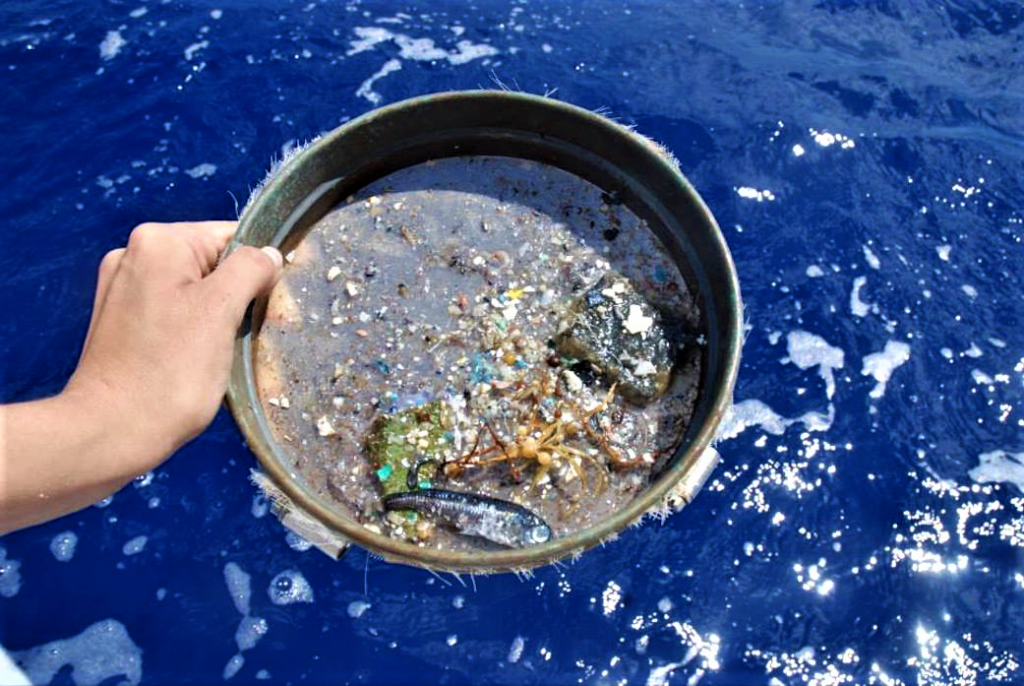 The research and lobbying group Environment Oregon has released a study on microplastics which delivers disturbing news for Oregonians who like to think of the state as containing large areas of unspoiled nature. They studied 30 Oregon rivers and streams and found microscopic fragments of plastic garbage in all of them. Bits of plastic, many too small to be seen, are in our water and finding their way into fish, land animals, soil, drinking water, food, and air. Some of the particles are so small they will slip through the protective membranes of our cells, which can severely damage the human body.
The research and lobbying group Environment Oregon has released a study on microplastics which delivers disturbing news for Oregonians who like to think of the state as containing large areas of unspoiled nature. They studied 30 Oregon rivers and streams and found microscopic fragments of plastic garbage in all of them. Bits of plastic, many too small to be seen, are in our water and finding their way into fish, land animals, soil, drinking water, food, and air. Some of the particles are so small they will slip through the protective membranes of our cells, which can severely damage the human body.
If you want to know why Coffin Butte Landfill is filling up so alarmingly, the single biggest culprit is plastics. The US generates 35 million tons of plastic garbage every year. That means that if you’re a typical American, last year you threw away your own weight in plastic – including plastic waste that was generated while producing products you used, even if you never saw that waste. That amount is likely to increase this year.
Attempts at recycling plastics often fail: more than 10,000 truckloads of plastic collected for recycling wound up being dumped into landfills in 2018, and it’s likely that even more will be dumped this year.
Just as we discovered in the 20th Century that the worst air pollution is usually not the dark clouds we can easily see belching from smokestacks but invisible gases and particulates, the most destructive plastics may not be the heaps of trash being cleared from the Willamette with rakes during a volunteer cleanup but the tiny fragments that have broken off of detergent bottles and laptop cases.
Plastics don’t decay the way organic substances do. They flake off into smaller and smaller bits. When they get to be smaller than five millimeters, about the size of a grain of rice, they are classified as microplastics.
Microplastics are a big problem. Now that people are looking for them, they’re turning up everywhere – like the bottom of the ocean, inside our food, and even on the tallest peaks of our mountains.
This is why many people are working hard to develop commercially viable materials which are competitive with plastics and which decay naturally.
Part of a public interest network, Environment Oregon exists for lobbying and advocacy as well as research. They’ve created a set of proposals for dealing with the harm caused by plastic pollution:
- A Federal ban on single-use plastic bags, polystyrene and other single-use plastic products (Corvallis has been in the lead on this)
- A state ban on Styrofoam
- A state Extended Producer Responsibility Law making manufacturers responsible for the waste their products will become
- State and local opposition to anything which encourages the manufacture of plastics from petroleum or fuel from plastics
- Ban overstock clothing from landfills, so that clothing manufacturers will stop overproducing – fibers from synthetic fabrics are a major source of microplastic pollution
- Green infrastructure and stormwater programs in cities to reduce the amount of microplastics that are washed out through storm drains
- A state law requiring filters on all washing machines that will prevent microfibers from getting into sewer lines
The Environment Oregon report is calling for changes that are not going to be easy. But they are very important for the health and welfare of our world.
By John M. Burt
Do you have a story for The Advocate? Email editor@corvallisadvocate.com


